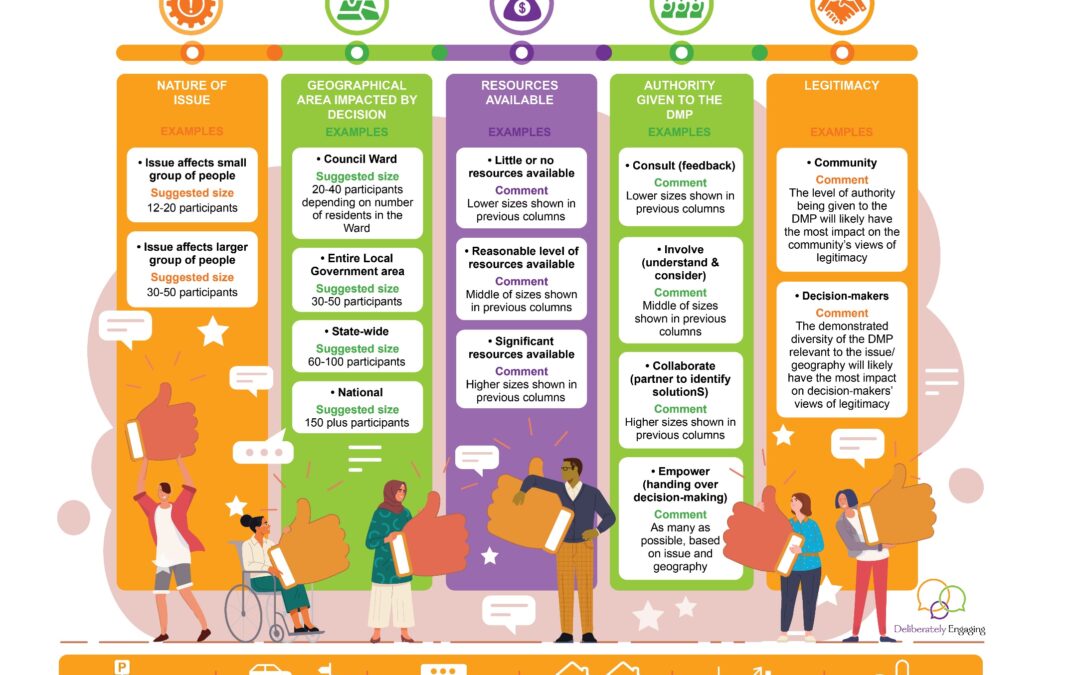For over a decade, I’ve had the privilege of spearheading the recruitment of over 60 mini-publics across Australia. As my experience grows, so does my understanding, alongside the insights from my PhD research, changing how I think about inclusion when recruiting mini-publics.
Recently, a client posed an intriguing question: How do we determine the optimal number of participants to ensure genuine community representation on a deliberative panel? While they were likely seeking a straightforward formula, the complexity of the matter prompted me to dive deeper into the nuances of mini-public setup, inspiring the insights I’m excited to share with you in this blog post.
But before we delve into the mechanics, let’s demystify what a mini-public truly entails. It’s more than a mere reflection of community demographics; it’s a mosaic that embraces the voices of those directly impacted by the issues at hand, including those often marginalised in traditional political discourse. Yet, achieving this representation poses its own set of challenges (which I will address in future blog posts).
I shy away from the term ‘representation’ as it can blur the roles within a mini-public. It’s not about challenging elected officials or claiming to speak on behalf of the community. Instead, it’s about enriching discussions with diverse perspectives, informed by broader engagement, the dynamic discourse within the room and consideration of the broader community interest.
Why bother with mini-publics, you may wonder? Some key reasons to establish a mini-public are because they:
-
- Bridge the gap, engaging voices often unheard in the usual political discourses.
- Deepen understanding, tackling thorny issues head-on and fostering empathy.
- Democratise decision-making, replacing bureaucratic sense-making with community-driven insights.i
- Illuminate the silent majority, offering decision-makers a nuanced understanding of community values beyond the vocal minority.
- Now, on to the question, “How big should a mini-public be?” In my view, there’s no neat, one-size-fits-all formula for this. It’s not a simple arithmetic problem but a nuanced equation, considering:
-
- The scope of the issue at hand and its impact on different segments of the community.
- The geographical scale of the decisions, from local concerns to national implications.
- The allocation of resources, ensuring a robust deliberative process devoid of shortcuts.
- The level of authority vested in the mini-public fostering trust in the resulting recommendations.
- The pursuit of legitimacy, upholding democratic ideals in every aspect of design and execution.
In designing and recruiting mini-publics, we’re not merely selecting participants; we’re curating forums for inclusive deliberation where every voice, no matter how soft, holds weight. Despite the decades over which mini-publics have been recruited and engaged around the world, there is still much room for improvement in our practice. I’d love to hear your ideas about how we can continue to improve.
If you would like to know more about deliberative mini-publics, Season One of Real Democracy Now! a podcast that considers them from various perspectives.


Recent Comments